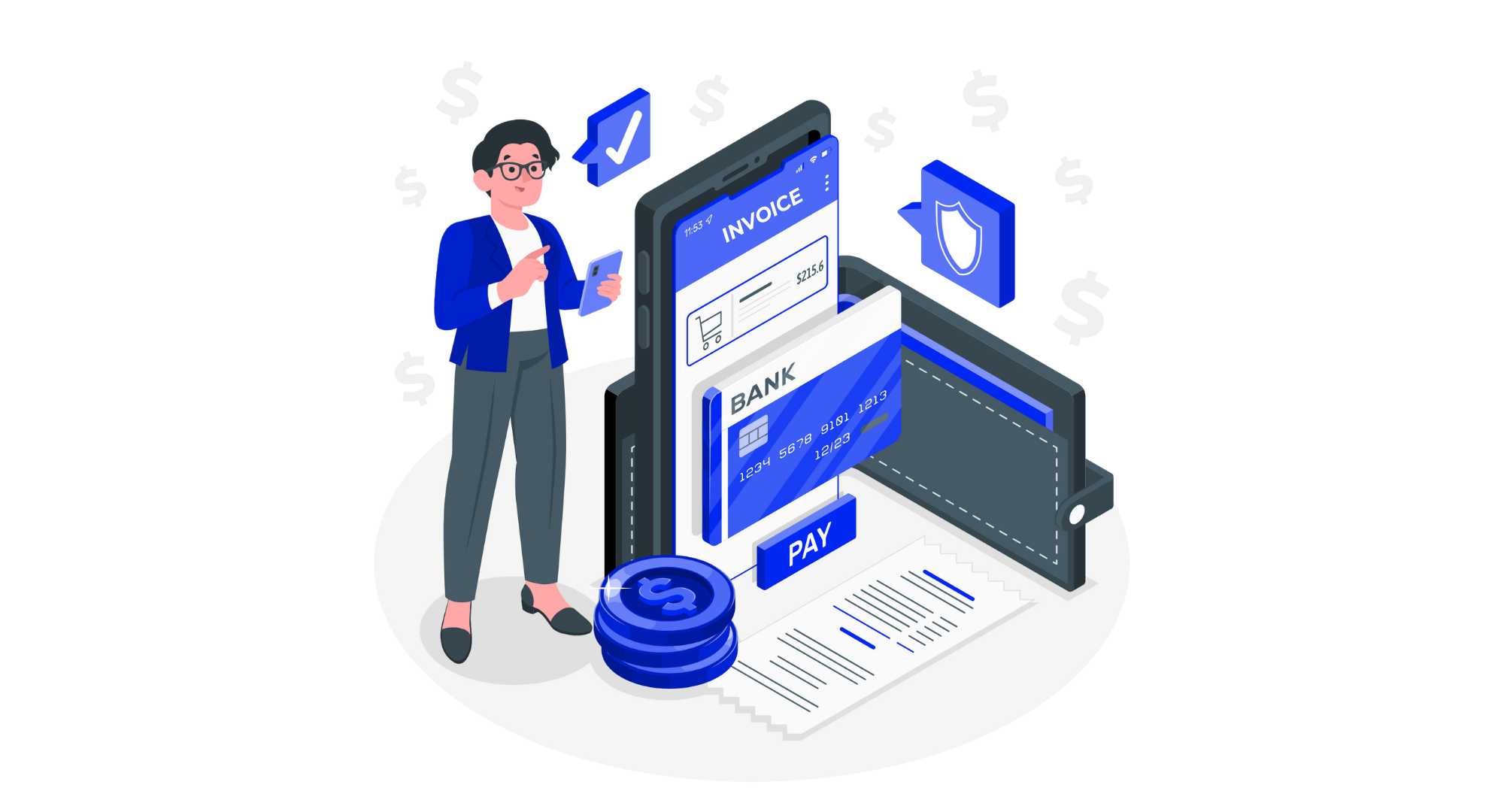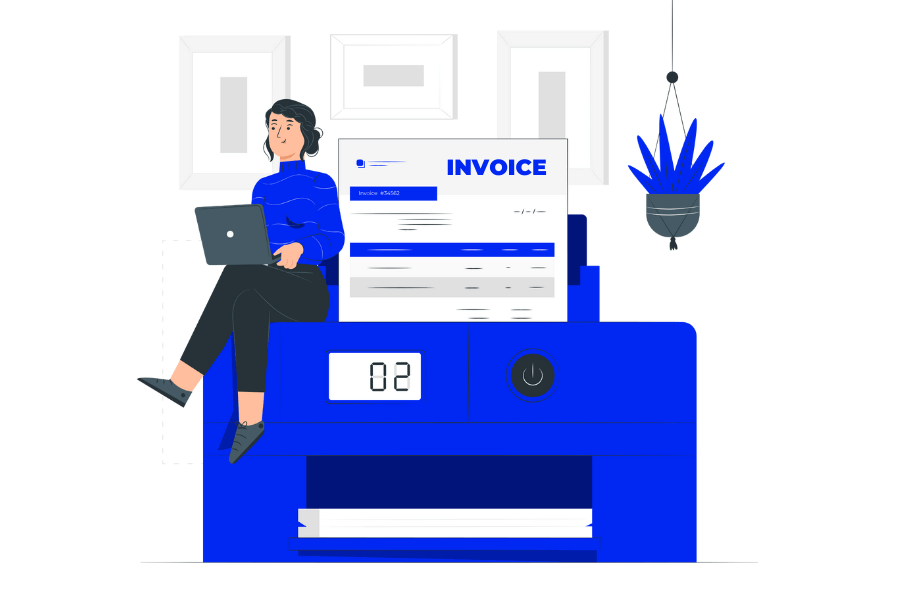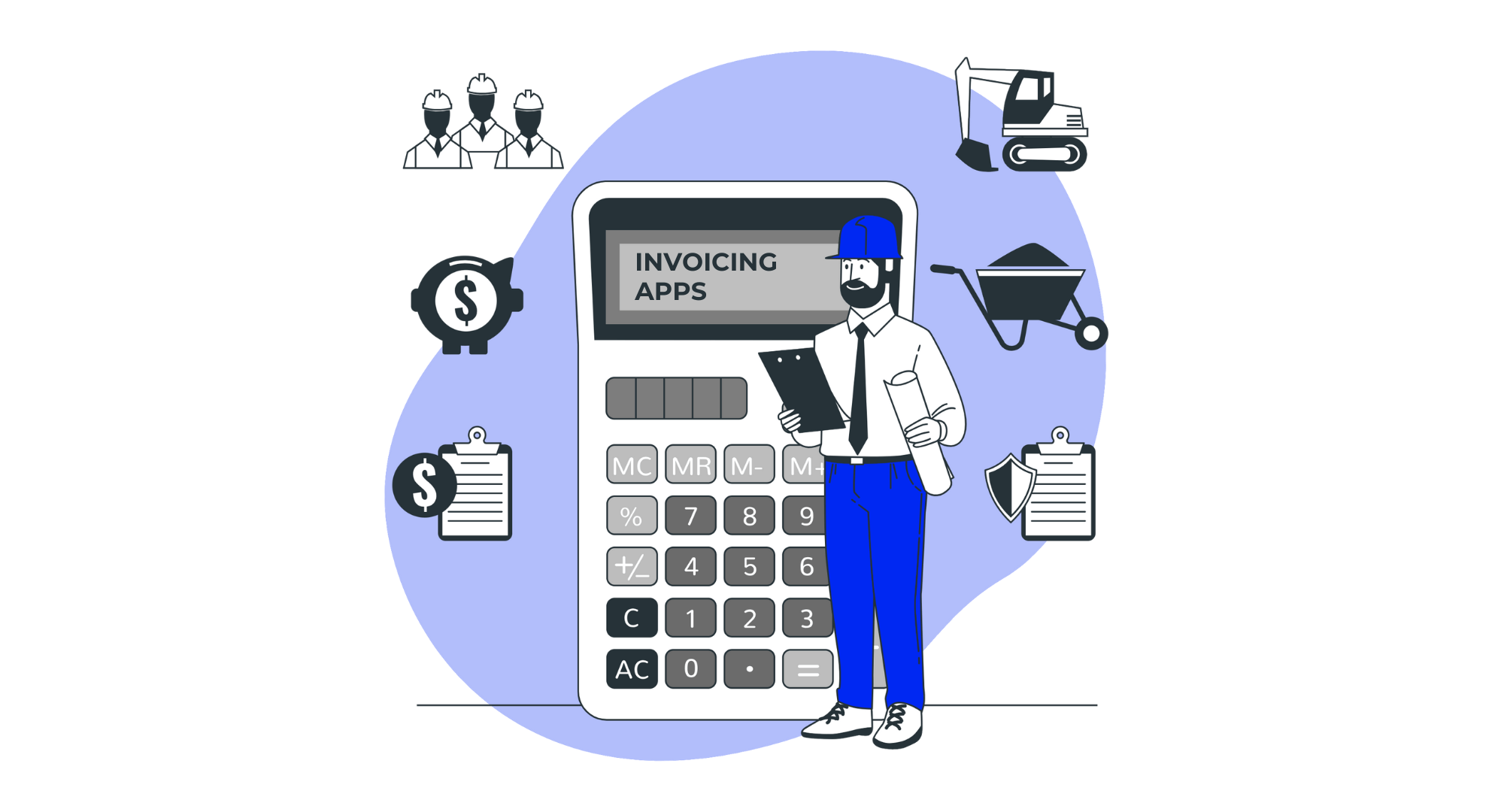
Managing finances is the backbone of any business, large or small. Among the various financial processes you may encounter, invoice reconciliation stands out as an essential practice. But what exactly does it entail, and why is it so important?
The Ins and Outs of Invoice Reconciliation
Invoice reconciliation compares a company’s internal financial records against invoices received or sent to ensure accuracy, completeness, and compliance. It’s about double-checking to ensure the money going in and out matches the accounts.
When discussing invoice reconciliation, you refer to a two-way or three-way match.
In a three-way matching, you compare the vendor invoice against the purchase order you issued and the goods receipt or service confirmation. In a two-way reconciliation, you may simply align your invoice against your purchase order.
The goal is to validate several key variables:
- Quantity: Did you receive the amount you ordered?
- Price: Does the invoice amount align with the agreed-upon price in the purchase order?
- Quality: Does the good or service received meet the specifications set out in the purchase order?
Why is it so critical?
Most payment errors find their roots in discrepancies between invoices, purchase orders, and delivery receipts. For example, you might be billed for 100 units of a product but receive only 90.
If this discrepancy is not caught through reconciliation, you end up overpaying. Most payment errors result from such invoice discrepancies.
Let’s not forget the spiraling effects of these errors. An overpayment today could lead to a budget shortfall tomorrow, affecting your ability to invest in essential business activities. Conversely, an underpayment could result in penalties or strained relationships with your vendors.
Another critical reason to prioritize invoice reconciliation is the increasing prevalence of payment fraud. The 2023 AFP survey found that 65 percent of organizations were victims of attempted or actual payment fraud activity in 2022.
How Invoice Reconciliation Addresses Payment Issues
Given the complexity of business transactions and the alarming rate of payment fraud, invoice reconciliation is an essential business practice. Here’s how invoice reconciliation helps in this aspect:
Early detection
Regular reconciliation allows you to identify suspicious activities quickly. For instance, repeated double invoicing from a particular vendor could be a red flag warranting further investigation.
Verification
Invoice reconciliation also acts as a verification tool. By rigorously cross-checking invoice details with purchase orders and delivery confirmations, you can catch and prevent fraudulent charges before finalizing payments.
Accountability
Maintaining a well-documented invoice reconciliation process ensures a chain of accountability. It helps in catching the perpetrator and acts as a deterrent for internal and external parties contemplating fraud.
Types of Invoice Reconciliation
Before diving into the specific methods, it’s crucial to understand that invoice reconciliation isn’t a one-size-fits-all process. Depending on your business needs and operational scope, you may engage in different kinds of invoice reconciliation.
Here are some common types you should be aware of:
Vendor invoice reconciliation
This involves matching the vendor invoices you receive against your purchase orders and delivery receipts. If your business relies on a supply chain, then this form of reconciliation is one you must do. This reconciliation ensures you only pay for goods and services you have ordered and received.
Customer invoice reconciliation
When you’re on the other side of the transaction, sending invoices to your customers, reconciliation plays an equally important role. It ensures the money you should be receiving matches the invoices you’ve sent out.
This reconciliation is crucial for businesses with a diverse customer base with varying payment terms.
Internal invoice reconciliation
Sometimes, invoices are generated and reconciled internally between different departments, especially in larger organizations.
For example, the IT department may issue an internal invoice to the Marketing department for server space usage. Internal invoice reconciliation ensures that all inter-departmental transactions are fair, accurate, and within budget.
Automated vs. manual reconciliation
Depending on your business’s scale, you may choose between automated and manual reconciliation. Automated systems in an Enterprise Resource Planning (ERP) solution can automatically match invoices against corresponding purchase orders and receipts.
It can flag any discrepancies for review. In contrast, smaller businesses might find manual reconciliation sufficient for their needs. However, this process is more time-consuming and prone to human error.
The Process of Invoice Reconciliation
So, how do you go about invoice reconciliation? Here’s a step-by-step process:
Step 1: Gather all documents
Gather all the necessary documents, including purchase orders, delivery receipts, and invoices. Digital storage solutions can make this step easier.
Step 2: Review for accuracy
Manually review or use automated tools to compare these documents. Look for any mismatches in product descriptions, quantities, or pricing.
Step 3: Identify discrepancies
Note down any discrepancies for investigation. Is the error on your end, or has the vendor made a mistake? Sometimes, it may be as simple as a typo. Other times, it could indicate fraud.
Step 4: Resolve issues
Contact the relevant parties to resolve discrepancies. This may involve revising the invoice or even issuing refunds.
Step 5: Update records
Once everything checks out, update your financial records to reflect the accurate information.
Tips for Effective Reconciliation: Best Practices To Follow
Here are some universal tips for making your reconciliation process as effective as possible:
Adopt automation
Research revealed that 26 percent of organizations still receive paper invoices. Not only is this method outdated, it’s also costly.

(Source)
In today’s fast-paced business world, automation is no longer a luxury but a necessity. Manual reconciliation is time-consuming and susceptible to human error. Automation can significantly reduce invoice processing costs.
Artificial intelligence (AI) tools, often part of larger ERP systems, can streamline reconciliation. They automatically match invoices to purchase orders and delivery receipts, effectively flagging discrepancies for further review.
Consistency is key
In the financial world, even a small oversight can lead to significant consequences.
Consistency in the invoice reconciliation process is not just a recommendation—it’s a mandate. Yet, it’s astonishing how many businesses overlook the importance of setting and sticking to a regular reconciliation schedule.
There’s a natural human tendency to put off tedious, time-consuming, or challenging tasks, and reconciliation can tick all these boxes. However, this consistent engagement with the process keeps the financial gears of your business running smoothly.
A consistent reconciliation schedule—be it weekly, bi-weekly, or monthly—brings a host of benefits:
- Timely error detection: Regular reviews allow you to catch discrepancies in real-time, enabling immediate action before they escalate into more significant problems.
- Improved financial data: Consistency in reconciliation enhances the reliability and quality of your financial data, which is crucial for informed decision-making.
- Operational efficiency: With a regular schedule, you’ll find that you become faster and more efficient at the reconciliation process. Over time, you become accustomed to the patterns and intricacies involved.
- Vendor relationship management: A consistent reconciliation process can also positively impact your relationships with vendors. Timely detection and correction demonstrate your commitment to fair and accurate dealings, which can go a long way in fostering trust.
Knowing that your financials are consistently checked and double-checked provides a sense of security that’s invaluable in today’s fast-paced business environment. In a sense, reconciliation improves your cash management.
Document everything
Maintaining thorough documentation is vital, especially when dealing with discrepancies or fraud.
Keep a reconciliation log that details every action taken during the reconciliation process, including initial comparison and any corrective measures implemented. This helps in the case of audits and provides insights into recurring issues that may require systemic solutions.
In a disagreement with a vendor or customer, your reconciliation log can be an evidence-based tool to support your case. This significantly reduces the time and effort needed to resolve conflicts.
Besides being a functional necessity, a reconciliation log is also an analytical tool. By regularly reviewing your documentation, you can identify recurring issues that signal a bigger problem.
Say you consistently find that invoices from a particular vendor are missing specific details. This tells you there’s a need for better vendor training or even re-evaluating your business relationship with that vendor.
Protect your logs with password encryption and restrict access to only those who need it. This is particularly important if your record contains sensitive information like bank account details.
Also, store your logs for a period that aligns with legal requirements and your company’s internal policies.
Involve multiple stakeholders
Although automation can handle much of the work, human oversight is indispensable for effective reconciliation.
Involving multiple stakeholders can provide checks and balances, ensuring greater accuracy. This multi-layered approach is particularly beneficial in large organizations where the stakes are high.
Prioritize reconciliation during peak seasons
For businesses with seasonal variations, such as retail or hospitality, peak seasons can result in a surge in transactions. While this increase in business undoubtedly benefits revenue, it also presents a heightened risk of financial discrepancies and fraud.
The more transactions you have, the harder it is to keep track of each. Errors and fraudulent activities can easily slip through the cracks. That’s why it’s a must to prioritize invoice reconciliation during these periods to avoid errors that can significantly impact financial health.
Allocate additional human resources to focus solely on reconciliation tasks during peak periods. This allocation allows for a more thorough review of each transaction, minimizing the risk of oversight.
While you may usually reconcile invoices weekly or monthly, consider shifting to daily reconciliations during peak times to catch discrepancies faster.
If you generally rely on manual reconciliation methods, it may be worth temporarily investing in automated solutions to manage the increased load. Even simple spreadsheet macros can help.
Keep open lines of communication with key stakeholders, like vendors and financial institutions. Prompt communication helps quickly resolve any discrepancies that may arise. Before the season kicks off, ensure all team members are well-versed in the potential challenges during this period.
Once the season is over, conduct a thorough review to identify what went well and what didn’t. This is the time to fix any systemic issues that could be problematic in the future. Performing regular reviews after peak seasons will improve your strategy for managing your finances over time.
Validate vendor and customer information
This might sound like a given, but you’d be surprised how often businesses overlook this basic step. Always validate the information on your invoices. Ensure that the vendor or customer details align with what you have in your records.
This process includes checking the tax details. Verifying these numbers ensures you deal with a legitimate business entity and aids in tax-related documentation or compliance.
The implications of missing this step can be far-reaching. You might run afoul of tax authorities if you engage with a vendor that turns out to be non-compliant or fraudulent.
Confirm addresses. Wrong addresses can be innocent errors. However, they can signify something more sinister, like a fraudulent vendor or a compromised account.
According to the ACFE or Association of Certified Fraud Examiners, companies lose five percent of their annual revenue due to fraudulent activities.
The ACFE’s 2022 Report to the Nations indicated that this percentage has been fairly stable over time. The report examined actual instances of fraud across different countries. On average, fraud incidents span a year and lead to a loss of $117,000.

(Source)
Check bank account information. Before processing any payments, always confirm the bank account details. Sending a payment to the wrong account can be a costly mistake. You have to think about the financial loss and the time and effort required to retrieve the funds.
A mismatch can often be an early warning sign of fraud. For example, a sudden change in a long-time vendor’s bank account details could indicate that their account has been compromised.
In such cases, always verify the change through a secondary means of communication. Scammers have made their processes sophisticated enough that they can pose as fake billers.
Use a standardized format
Using a standardized invoice format can significantly streamline the reconciliation process. Work on creating a standardized invoice template incorporating all essential elements, such as vendor details, PO numbers, invoice dates, and costs.
Don’t forget to develop internal guidelines for filling out and checking these standardized documents. Communicate these standards to your vendors and request that they adhere to the format. Review the standardized format to ensure it meets evolving business and regulatory requirements.
When invoices follow the same structure and systems, personnel can more quickly and accurately match them against purchase orders and receipts.
Implementing these best practices can make your invoice reconciliation process more efficient, accurate, and secure. It will help you save time and resources while improving your financial accuracy and integrity.
Implement Invoice Reconciliation for Your Business
Invoice reconciliation is not just another box to tick off in your accounting tasks. It is a crucial practice that safeguards the financial health of your business. It allows your business to save money, maintain strong vendor relationships, and ensure accurate financial reporting.
Remember, you don’t simply find mistakes but affirm accuracy and ensure compliance. When you show this business strength, it’s easier to foster trust. So, whether you’re a small business owner or the CFO, make invoice reconciliation a non-negotiable aspect of your financial processes.











